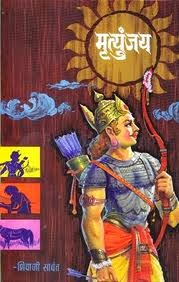Kusumbala's Fountain
 Mumbai is a unique city because just when you think you have figured it out completely, it tends to surprise you. The eastern part of Bombay is such a mystery which co-exists amazingly with the present day Mumbai. There are several stories which tend to get lost due to the frantic lifestyle of residents and some of them suffer from lack of representation.
Mumbai is a unique city because just when you think you have figured it out completely, it tends to surprise you. The eastern part of Bombay is such a mystery which co-exists amazingly with the present day Mumbai. There are several stories which tend to get lost due to the frantic lifestyle of residents and some of them suffer from lack of representation. Kusumbala's fountain in Reay Road is one of those stories which have suffered from lack of representation. Kusumbala was the daughter of a cotton broker Lowji Meghji. She was a sickly child and suffered from a terminal disease. At a young age of 13, she succumbed to her disease. The death of his daughter left him devastated.
In the olden days, water charity was considered as a noble deed and often water was donated in the name of a deceased family member. It was believed that donating water would allow the soul of the dead to rest in peace. This fountain is also an example of a water charity donated by Lowji Meghji and the fountain was constructed within a year after his daughter's death. As Mumbai's history is inextricably linked with cotton, the fountain in its heyday was used by cotton loaders and brokers, bullock cart drivers who transported cotton to the neighbouring docks for exports and visiting traders.
Systemic studies on these fountains help us in understanding the social fabric of the city. In other words, these fountains help us in understanding and recreating an era which created their own space in the artistic space in the town planning of the city. In most of these fountains, there are plaques related somewhere which narrate the reason behind the establishment of the fountain. The plaques and the surrounding data collected from both archival and oral sources become essential pointers to the information of various communities that immigrated to Bombay. Most of these fountains not only indicate the religious and cultural leanings of the donors and they tend to blend with the style and architecture of neighbouring buildings.
As India gained Independence and the neighbouring warehouses were acquired by the Food Corporation of India, the fountain fell into disuse. The lonely fountain today is defunct as the taps are stolen and is surrounded with weeds, empty alcohol bottles, plastic bags, cigarette and beedi ends and supari packets. It is amazing to see how dignified the fountain looks despite it being in a sorry state of utter disrepair.


Comments